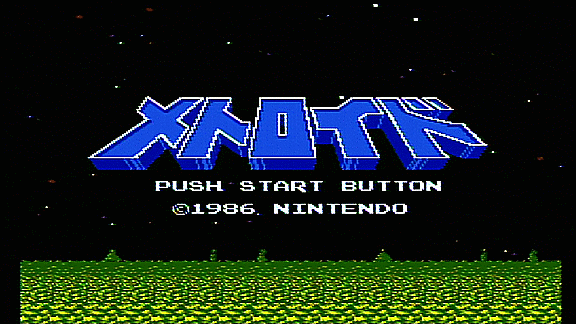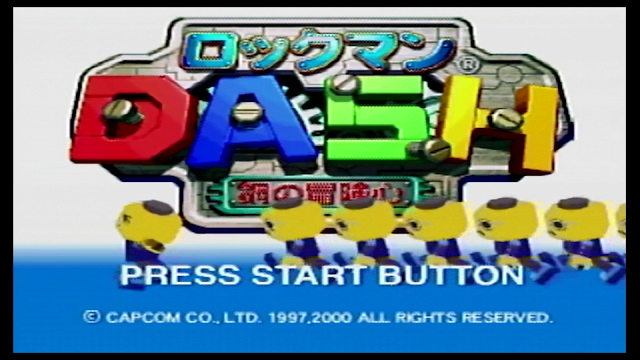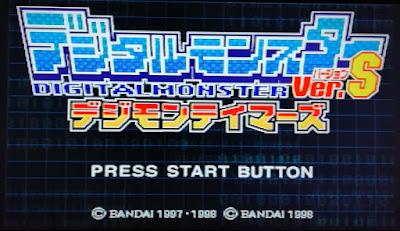Backlog Game Reviews 51 : Metroid On The Famicom Disk System
 |
| Metroid |
Hey there, and welcome to Backlog Game Reviews.
Today let's take a look at Metroid on the Famicom Disk System. A couple of reviews ago, I reviewed the remake of this game, Metroid: Zero Mission. You can check that review out here. The original Metroid was released in Japan on August 6th, 1986, for the Famicom Disk System. In 1987 it came to North America for the NES. And two years after the Japanese release it came to Europe on January 15th, 1988. When it was first released, Metroid was praised heavily worldwide, it received perfect scores from reviewers and sold very well. Far after its release in 2004, 2.73 million copies were sold worldwide. Let’s take a look and see how well this classic title has aged.
 |
| If you wait at the title screen a small text scroll will appear, telling you what your goal in the game is. |
The Story
The year is 20X5, and a galactic federation research ship has been attacked by space pirates. During the attack, the pirates stole creatures called Metroids, which the galactic federation had been studying for unknown reasons. Metroids are very powerful creatures. They latch on to their prey and drain them of their life force, quickly killing the victim.
 |
| The only way to defeat a Metroid is to freeze it and shoot it with missiles. |
The pirates plan to use the Metroids as bio-weapons and take over the galaxy. Aware of the space pirate's intentions, the federation sent soldiers to the pirate's base on planet Zebes. But, the pirates proved to be too powerful and easily defeated the federation soldiers. With no other choice, the federation hired the most famous bounty hunter in the galaxy, Samus Aran. The federation gave Samus orders to infiltrate planet Zebes, destroy all of the Metroids on the planet, and destroy the pirate's leader, a mechanical life-form called Mother Brain. Samus accepts the mission, goes to Zebes, and infiltrates the pirate's base.
 |
| Exploring planet Zebes. |
All of this is explained in the instruction book. Excluding the small text scroll at the title screen and the short ending, there is no in-game story. So, just like most NES and Famicom games, if you don’t have access to the instruction book, then you'll have close to no idea as to what's going on. But, in 1986 games didn't have much going for them in terms of in-game storytelling. A more detailed intro explaining the story would be nice but it's not that big of a deal.
The Gameplay
 |
| Fighting through a group of weak enemies. |
Metroid is an action platformer with a heavy emphasis on exploration. Your ultimate goal is to get to Mother Brain's lair and destroy her. To do that, you first have to defeat her two generals, Ridley and Kraid. But before you can stand any chance of beating those two, you'll have to search planet Zebes for power-ups, energy packs, and missile tanks. If you want to beat Metroid, you're going to have to explore every nook and cranny of planet Zebes.
 |
| Finding a Chozo statue will grant you a new power-up. |
When you first start playing, adventuring around Zebes is a fun experience, but it can become frustrating very quickly. The biggest problem this game has is that there is no in-game map, so it's very easy to get lost. Zebes is a big planet that's split into five sections, and each section has its own design theme, so at the very least, you should know what section of the world you're in. What makes navigating the planet hard is that every room in a section looks the same, so unless you’ve played the game multiple times and have the map memorized, you'll get very lost very fast, which can be very frustrating.
 |
| There are many hidden passages that you'll have to keep an eye out for. |
There are some other minor problems. When you die you restart with very little health and have to farm enemies for energy. Another annoying problem is that enemies can attack you when you're walking through doors. You can't move during the door animation, so you're defenseless during this time. But, Even though Metroid has all these problems, it's still a fun game.
 |
| You have to be careful when walking through a door, or else you'll get attacked when going through it. |
The Presentation
I played the Famicom Disk System version for this review. It’s more or less the same as the NES version, but there are some small differences, the sound and music being one of them. The Disk System gives the Famicom an extra sound chip which means the Disk System version has better sound quality. Which makes the already good soundtrack even better. The Disk System version also has more sound effects, for example, in this version bosses and enemies scream when attacked. The NES version doesn’t have this.
 |
| The Disk System version also has a save feature. The NES version uses passwords. |
Visually, the two versions are the same, and Metroid is a good-looking game. Samus’s sprites and enemy sprites look good and are very well-detailed, they also leave little confusion as to what the characters look like. The five sections of Zebes are visually different and give you the feeling that you've traveled to a different part of the planet. As far as early NES games go, Metroid did a great job in terms of visuals.
 |
| Samus vs Ridley, one of the games three bosses. |
Conclusion
Metroid on the NES and Famicom Disk System is a fun game but hasn't aged very well. If you can deal with the shortcomings that come with retro games like this, then you should give this game a try sometime. If you have less tolerance for that kind of thing, then you should give this game a pass and look into Metroid: Zero Mission, a remake of this game for the Game Boy Advance.
That's all I have to say about this game. Thanks for reading! The next review will be decided by the readers. A vote for what game will get reviewed next will be held on my Twitter account. More votes like this will be held in the future, so if you want to take part follow me on Twitter! That’s all for this review. I hope to see you again here at Backlog Game Reviews.



Comments
Post a Comment